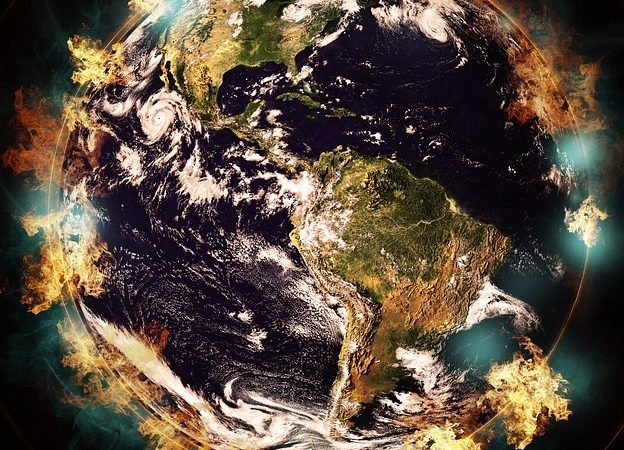Everyone knows that if you have a little mass and a little energy, that with a little labor, infrastructure, technology, financial transactions, assignment of ownership, and human cognition you can make the things that make our human civilization.
Everyone has spent time in school and living in the world of hard knocks knows our knowledge is imperfect. Every behavior does not produce expected results whether you are an individuals or a nation. But some things are very determinant. If you drive your car until the gas tank is empty it stops.
If it stops in the middle of a hot desert with no water for hundreds of miles and no cell phone service and little chance of anyone coming your way — you made some choices that are going to kill you and everyone in the car.
Now our civilization is a little more complicated than a car running out of gas in the desert. However, there is a good chance that when oil coal, gas, and uranium are not deliverable at the end of this century and we don’t find the technology to make wind and solar energy support us, we will be fighting each other over the last loaf of bread until only a small number of subsistence farmers survive.
I realize there are a lot of well meaning bloggers on MAHB. However, I keep asking myself, — What’s the use of our articles that suggest we can grow more food, with less energy, we can live with less resources per person. That we can learn to keep the peace with better mediation, We can redistribute the goods and services equally to reduce conflict — when doing all these things will have little affect on what happens when our civilization runs out gas and the alternative energy sources do not materialize.
If the car – running out of gas in the desert – is a good representation of our civilization,
- Why are we having trouble explaining it to the common folk on earth?
- Does the car in the desert model help us describe a viable global civilization that can run without gas?
- Do we know which collected human behaviors would keep that new civilization viable?
- How do we get people, living in this new civilization to take them?
- How do we make the people living in our present civilization take the behavior that would avoid the expected on-course tragedy and transition from where we are to this viable civilization?
Here are some of the answers on which I have been working:
1-minute video which puts economics into a context that might be useful in answering these questions. Economics in 60 Seconds
3 10-minute videos which show how much we have been underestimating how vulnerable our present civilization is to collapse.
Overpopulation Means Civilization Collapse (parts 1-3 scarcity conflict death spiral)
Losing Our Energy Slaves (a big decrease in delivered energy)
Underestimating Overpopulation (overshoot caused by declining supports)
A video that suggests that we cannot trial and error our way though this bottleneck. Instead we must steer using behavior that reflects conditions that don’t yet exist. (anticipatory behavior)
What collected Behavior Creates Sustainability
Two text views of a target viable civilization.
What does a sustainable civilization look like.
Design for a Viable Civilization (newest shortest view)
Here are two videos which describe adequate contraction
How Much Degrowth is Enough? (based on energy)
How much population decline saves civilization? (based on soil)
This video helps determine the viability of any proposed civilization design
Sustainable Civilization Analysis Project 10 min video
This text describes Unwinding the Human Predicament describes two social contracts one that shapes collective behavior to maintain a viable design once it exists and a second social contract that shapes behavior during the transition from our present civilization to one that is viable. (2020-2100) .
This video describes part of the process for putting the social contracts in place Change the course invite video
5 activities to help people understand the relationship between population and viability.
ACTIVITY 1: Have each person on earth make a personal estimate of Who gets injured and when. (small group discussions, class discussions, etc where each person creates their own estimate of how many people will die of starvation and conflict between now and 2100. If this number is tiny no change in the human course will occur. If the estimate is so large it includes everyone, the person might be motivated to change course – that is consider behavior previous thought to be completely unacceptable.
ACTIVITY 2: Introduce “Civilization Viability” as a curriculum —primary schools through college, letter to faculty, deans, principles, and parents
ACTIVITY 3: Get everyone participating in the Sustainable Civilization Analysis Project 10 min video applied arithmetic as a way of understanding reality.
ACTIVITY4: Jump start civilization viability thinking — view video The Human Predicament and What to Do About It
ACTIVITY 5: Do the workshop that ties the videos and SKIL notes together.
Self Guided Tour of the Human Predicament and What to Do About it.
Jack Alpert PhD Director:
Stanford Knowledge Integration Laboratory

